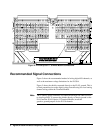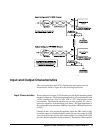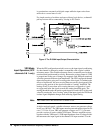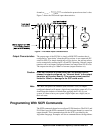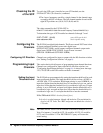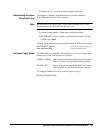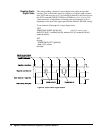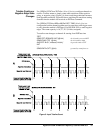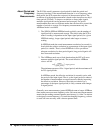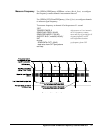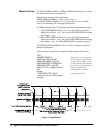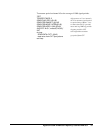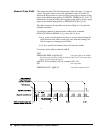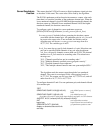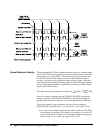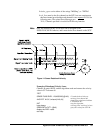
16 Agilent E1538A Enhanced Frequency/Totalize/PWM SCP
About Period and
Frequency
Measurements
The E1538A actually measures signal period for both the period and
frequency functions. If the measurement function is set to frequency rather
than period, the SCP returns the reciprocal of the measured period. The
resolution of each period measurement is based on the time processor chip’s
timer period (238.4nS). To improve resolution on faster input signals,
multiple signal periods can be measured and averaged. For period
measurements there are two different modes that can be used to control the
number of periods to average. For frequency measurements only the
APERture mode is available.
1. The [SENSe:]PERiod:NPERiod mode explicitly sets the number of
signal periods to measure and average. The time it takes the SCP to
return a reading is dependent on the input signal period (for a given
NPERiod setting), longer signal periods take longer to return a
reading.
In NPERiod mode the actual measurement resolution (in seconds) is
fixed while the relative resolution (as a percentage of the input signal
period) is variable. That is, when NPERiods is set to provide an
adequate resolution for short period signals, long period signals will
have increased resolution.
2. The APERture mode sets a fixed duration that the SCP will use to
measure multiple signal periods. The actual effective APERture
<time> will be:
.
The minimum aperture will be 1 signal period, and the maximum will
be 255 signal periods.
In APERture mode, the effective resolution (in seconds) varies with
the period of the input signal. That is, as the signal period is reduced,
the number of measurements averaged increases, thereby improving
the effective resolution. However, the relative resolution (as a
percentage of the input signal period) is fairly constant with changes
in signal period.
Generally, more measurements (greater NPERiod count or longer APERture
time) means a more accurate frequency value. Of course more measurements
means that the reading returned contains more latency (is “older” in relation
to the signal's current frequency). To track fast changing frequency, you have
to trade-off some accuracy with a shorter aperture time.
I
NT
<time>
signal_period
--------------------------------
signal_period×



